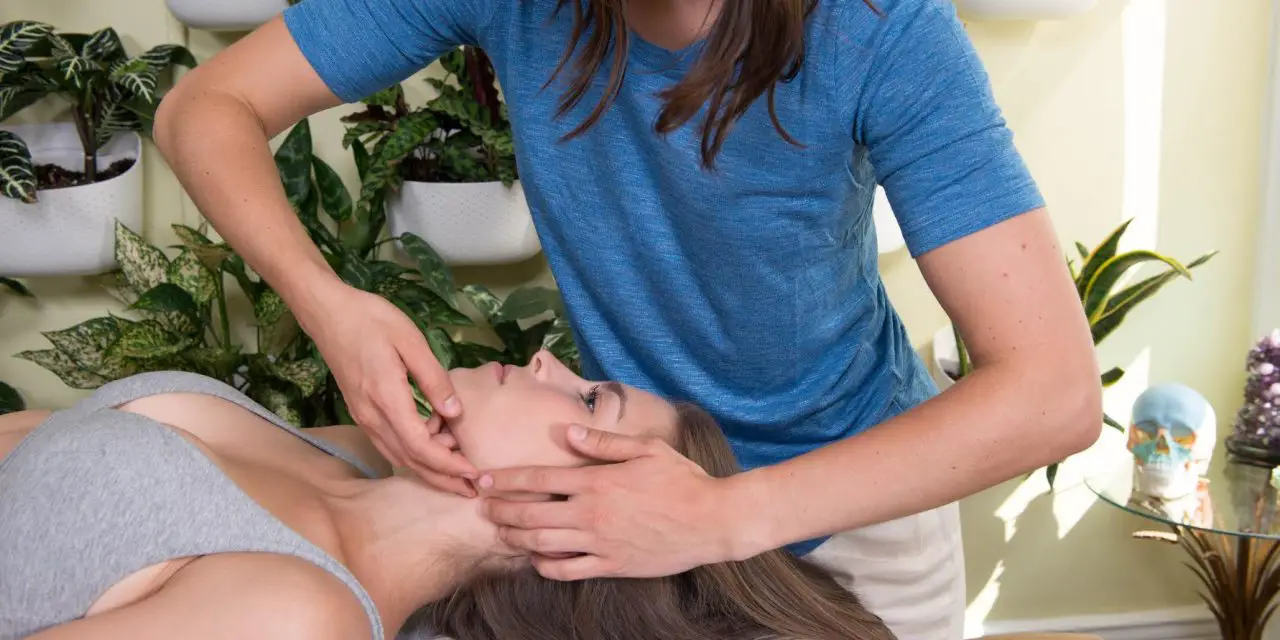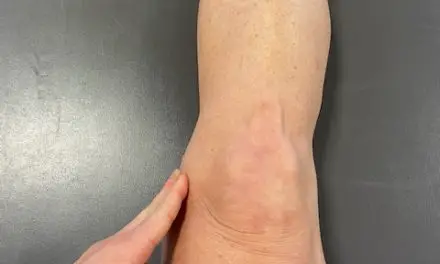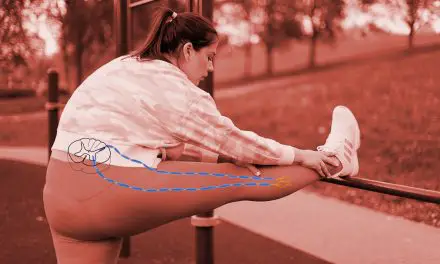Many proponents of lymphatic drainage massage (sometimes called manual lymphatic drainage or MLD) can reduce swelling and other symptoms of lymphedema, but current scientific research do not have a strong support for such claim.
A 2020 study that was published in Medicine found that such lymphedema massage “might not add any effect to the treatment and prevention of lymphedema after breast cancer surgery.”
Headed by Professor Lezhi Li, researchers from Central South University in Changsha, China, reviewed and pooled data from 17 qualified randomized-controlled trials (RCTs) from 1998 to 2018 with a total of 1,911 subjects.
Each study has a range of 12 to 500 subjects, and the researchers divided the studies into two groups. Twelve of them examined the effects of lymphatic drainage massage on lymphedema treatments, while five trials examined whether it can prevent lymphedema or not after surgery. Most of the trials used the Vodder Method while a few used the Földi Method.
Not only did lymphatic massage had “no added benefit” to reducing the swelling of the arm, some of the trials found “no benefit to the prevention of lymphedema” compared to other treatments, like exercise and compression garments.
Li et al. concluded that “it was unclear whether [manual lymphatic drainage] should be part of the treatment plan for breast cancer patients.”
Similarly, a 2022 systematic review of 11 RCTs with a whopping total of 1,564 patients with lymphedema from breast cancer found that MLD “significantly improved” pain but “do not support the use of MLD in improving volumetric of lymphedema and quality of life.”
However, a 2021 systematic review also found that the effects of MLD may be different between different populations. Among 10 RCTs with a total of 520 women, the researchers compared one group of patients who are at risk of breast-cancer-related lymphedema with those who have the same condition.
The results in the first group is “inconclusive” because there were only two studies included while the second group (eight studies) had “limited benefit” when MLD treatment alone is compared with standard treatments, such as compression garments, physical therapy, and typical skin care. They said that their review is “consistent” with previous reviews.
Past reviews of manual lymphatic drainage of breast cancer patients
The results of this systematic review and meta-analysis is somewhat mixed compared to two previous reviews. A 2015 Cochrane Review of manual lymphatic drainage for breast cancer patients found that such massage may provide better outcomes for those with mild to moderate levels of lymphedema than those with moderate to severe levels.
The review had six trials that were grouped in three categories. One trial compared lymphatic massage plus physical therapy with physical therapy alone.
Two trials compared lymphatic massage plus compression garment with compression garment alone.
Three trials compared lymphatic massage plus compression therapy with a non-lymphatic massage with compression therapy.
In the latter group, the authors said that the trials were “too varied to pool” and had mixed outcomes of treating the swelling of the tissues. Regardless of the type of treatment received, about 60% to 80% of the patients reported to feel better. Swelling had reduced in the one-year follow-up if the patients had continued to use the compressive garments.
Because of the low number of included studies and sample sizes, the conclusions and data should be taken with caution.
In the second systematic review that was published in 2013, researchers from Taipei Medical University in Taiwan found “no significant difference in the incidence of lymphedema in patients treated with or without [manual lymphatic drainage].” The methods were quite “poor” which makes the risk of bias to be high.
After reviewing 10 randomized control trials with a total of 566 patients with breast cancer-related lymphedema, they “cannot recommend the addition of [manual lymphatic drainage] to compression therapy for patients with breast-cancer-related lymphedema.”
Another systematic review done by a team of researchers from Macquarie University in Sydney, Australia, concluded similar results with the aforementioned studies.
Among the data of 17 randomized controlled trials with a total of 867 women and two men, the researchers wrote that “it is difficult to draw clear conclusions regarding the effect of [manual lymphatic drainage]” on patients with breast cancer-related lymphedema.
Although some low-quality studies indicate that lymphatic drainage massage can help prevent the progression of lymphedema after patients receive breast cancer surgery, high-quality research finds “no further benefit of [manual lymphatic drainage] beyond education combined with exercise therapy in reducing lymphedema” in the long run.
The researchers also pointed out that there is “little indication” on whether the reductions of the tissue swelling and the differences between the treatment types were “clinically meaningful.”
Given the different types of trials included, the number of trials and total number of subjects, and statistical method of evaluating the data, it is likely that the outcome of lymphatic drainage massage may vary among different people.
So should you get a lymphatic drainage massage?
Although the current evidence suggests that lymphatic massage does not significantly reduce the tissue swelling of lymphedema, perhaps there are still some benefits to the massage — or almost any type of massage — for patients recovering from breast cancer surgery and having lymphedema.
Since massage therapy can help reduce stress and pain (via descending modulation and other neurohormonal factors) and improve mental health, perhaps patients can benefit from these outcomes other than what was studied in the existing literature.
Would healthcare providers still endorse lymphatic massage or massage therapy in general given the current evidence and what is understood about touch and pain? Well, that would be another story.
Registered massage therapist Jennifer Slauenwhite, who practices in Maple Ridge, B.C., said that research like this gives therapists an opportunity to grow and adapt.
“Each time a new piece of research, like this, comes out, we have an opportunity to update our understanding, explanatory models, and treatment focus,” she said. “The vernacular matters.”
- must access peer-reviewed, scientific articles relevant to massage therapy practice, and apply as relevant.
“Even if it’s not a legal requirement from provincial or [U.S.] state bylaws, it’s the ethical and moral thing to if you want to provide the best care for your patients, or in providing the best of patient-centred care,” Slauenwhite said.
“From this new piece of research, it is quite clear that there is no benefit to adding manual lymphatic drainage to ‘standard treatment,’ which includes compression bandage or garments, education for skincare, exercises guidance for reducing lymph flow, and safety precautions.”
Lymphedema and breast cancer
For some people, lymphemdema and breast cancer go hand-in-hand. Sometimes lymphoceles could develop, which are a collection of lymph fluids that are not surrounded by a cellular lining. This is often caused by surgery related to cancer and gynecological health issues.
Lymphedema could develop from chemotherapy or surgical treatments for cancer. For example, a study of 313 patients in Ghana with breast cancer found that nearly 10% of the sample developed lymphedema in the axillary (armpit) lymph node.
In most developed countries, about 8% to 21% of breast cancer patients would likely get lymphedema on one of their arms after getting treated, depending on the type of study examined. In the U.K., the prevalence is about 1 out of 5,129 patients in the South West and 1 out of 2,763 patients in the West Midlands.
In low-income and middle-income countries, such as Nigeria and Brazil, the prevalence of leg lymphedema is between 7% and 13%. The researchers who conducted this study could not determine how widespread or how common was lymphedema in the arm because the studies were too “heterogeneous” to be reliably estimated.
The lymphatic system transports lymph, which is a clear fluid that contains white blood cells, cellular materials, water, proteins, fats, and bacteria. Similar to the blood circulatory system, it has lymph capillaries, lymph nodes, and other vessels that are branched throughout the body. Lymph fluid comes from interstitial fluids that are collected by the lymph capillaries.
Unlike the circulatory system that has a heart to pump blood, the lymphatic system relies on skeletal muscle contractions and some smooth muscles that are attached to the lymph vessel to move lymph around. Lymph vessels also have valves that prevent lymph from flowing backward.
Besides lymph fluid accumulation in the tissues, excessive fat tissues and fibrosis can disrupt the lymph flow by compressing against lymph capillaries. This can happen not only between the skin and muscles but also between or within muscle cells.
Slauenwhite mentioned that registered massage therapists should develop professional relationships with other healthcare professionals who work in the compression garment business within their communities.
They can also refer patients to each other, establish better trust, and encourage patient compliance for wearing the compression garments.
“But maybe we shouldn’t throw the baby out with the bathwater,” Slauenwhite said. “[Lymphatic drainage massage] is gentle and relaxing if nothing else, so if a patient finds this style of massage pleasant and beneficial, then it aligns with the patient’s goals, as long as the explanatory model is updated in alignment with current evidence.”
A native of San Diego for nearly 40 years, Nick Ng is an editor of Massage & Fitness Magazine, an online publication for manual therapists and the public who want to explore the science behind touch, pain, and exercise, and how to apply that in their hands-on practice or daily lives.
An alumni from San Diego State University with a B.A. in Graphic Communications, Nick also completed his massage therapy training at International Professional School of Bodywork in San Diego in 2014.
When he is not writing or reading, you would likely find him weightlifting at the gym, salsa dancing, or exploring new areas to walk and eat around Southern California.






